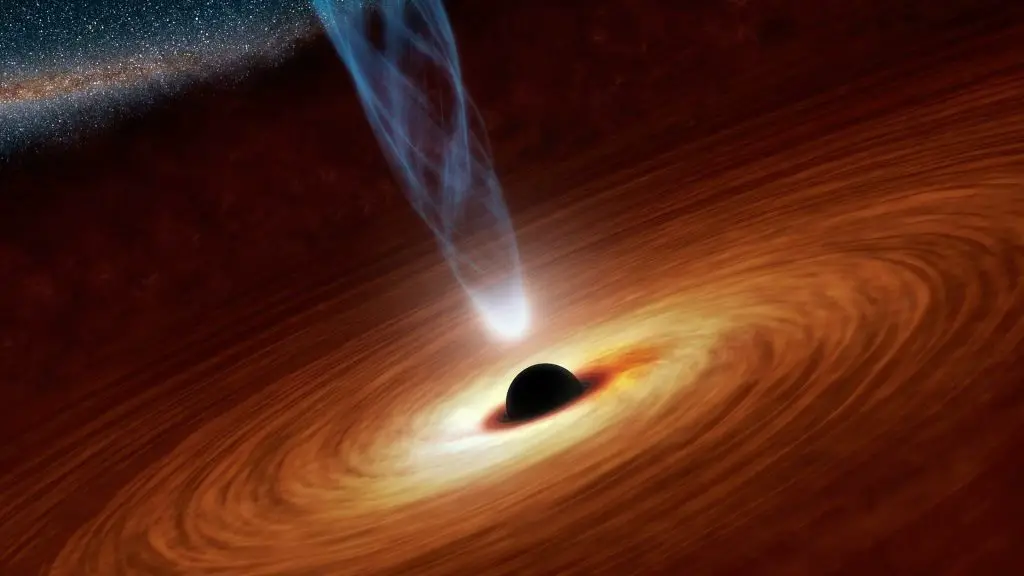As a civilization, we are curiously looking out for discoveries in the Cosmos. To feed our curiosity and unlock new mysteries of the Universe, Astronomers just discovered a new dark galaxy with very small or no stellar mass which belongs to a group of galaxies known as dark galaxies. This discovery marvels the researchers as galaxies like these are so difficult to find.
The newly discovered galaxy contains clouds of gas with possibly very few or no stars. Based on our scientific observations of the Cosmos so far, astronomers reveal that this newly discovered galaxy is the only isolated dark dwarf galaxy in the local universe. The newly spotted galaxy is named FAST J0139+4328 and it is mostly made of dark matter. Further observation of this galaxy reveals that visible matter such as stars, gas, and dust occupy only a small percentage of its entire mass.
However, FAST J0139+4328 has low luminosity which made astronomers assume that it might have only clouds of gas and no stars. The researchers that made the discovery revealed that the galaxy does not have any optical counterpart. But how did astronomers make such a discovery? Continue reading to find out.
How the New Galaxy that is entirely made of Dark Matter is discovered
Astronomers used the Five-hundred-meter Aperture Spherical radio Telescope (FAST) and the Panoramic Survey Telescope and Rapid Response System (Pan-STAARS) to discover the new dark galaxy. This is the first time researchers are spotting this galaxy in the local universe, and they were amazed by its features. FAST J0139+4328 has a low stellar mass and low magnitude that marvels astronomers even more.
“These findings provide observational evidence that FAST J0139+4328 is an isolated dark dwarf galaxy with a redshift of z = 0.0083. This is the first time that an isolated dark galaxy has been detected in the nearby universe,” the astronomers published in their article.
This research is led by the Lead Author Jin-Long Xu from the Chinese Academy of Sciences and the National Astronomical Observatory. Xu and other scientists from Chinese scientific institutions titled their publication, “Discovery of an isolated dark dwarf galaxy in the nearby universe.”
Based on their publication, the astronomers noted that the isolated dark dwarf galaxy has a redshift of z = 0.0083. This implies the galaxy is about 1 million to 1.25 million light years away. The researchers also noted that the dark galaxy has an isolated HI cloud, implying that it is made up of clouds of neutral hydrogen and not molecular or ionized hydrogen. The astronomers also noted that the shape of the galaxy reveals that it exists in the form of a disk galaxy with a rotational structure.
How did the researchers discover that FAST J0139+4328 is almost made up of dark matter?
Scientists have developed several theories explaining the concept of dark matter and its relationship with galaxies. However, one of these theories which are identified as modern cosmological theory best explains this relationship between galaxies and dark matter.
“Theory says that dark matter haloes contain galaxies as if the dark matter provides the structure for the galaxy to form,” Universe Today wrote explaining the theory. “The halo envelops the entire galactic disk and extends beyond the edge of the visible galaxy.”
Based on our technological advancement, astronomers still lack the ability to directly spot dark matter. However, they often relate its existence based on its effects on cosmic objects around it. Astronomers that conducted this study suggest that FAST J0139+4328 gas failed to form stars which make it challenging for the researchers to fully understand how galaxies are formed.
“Furthermore, the discovery of dark galaxies is crucial to understanding galaxy formation since gas-rich dark galaxies may reflect the earliest stage of galaxy formation,” the authors revealed.
Astronomers across the world will still need to conduct more studies to understand the basic formations of these dark galaxies.
“This is the first time that a gas-rich isolated dark galaxy has been detected in the nearby universe,” the researchers added. “In addition, a galaxy is assumed to form from gas, which cools and turns into stars at the center of a halo. FAST J0139+4328 has a rotating disk of gas and is dominated by dark matter but is starless, implying that this dark galaxy may be in the earliest stage of the galaxy formation.”
Astronomers further revealed that dark dwarf galaxies like the FAST J0139+4328 may not have enough dark matter to keep their gas together. Hence, the small amount of gas is the actual cause of triggered instability in the galaxy’s rotating disk. The researchers said that dark dwarf galaxies without stars are extremely faint, making them quite difficult to detect. However, astronomers can only rely on neutral hydrogen (HI) instead of electromagnetic radiation to detect them.
“Future blind H I surveys with high sensitivity and high-velocity resolution are expected to contribute considerably to our understanding of the absence of ultra-faint galaxies,” the authors finalized.
Conclusion
The discovery of this fascinating dark galaxy has significantly unlocked the door to new knowledge in astronomy. Astronomers can explore the idea of this discovery by finding other ultra-faint galaxies in space worlds. What do you think about this fascinating discovery?





